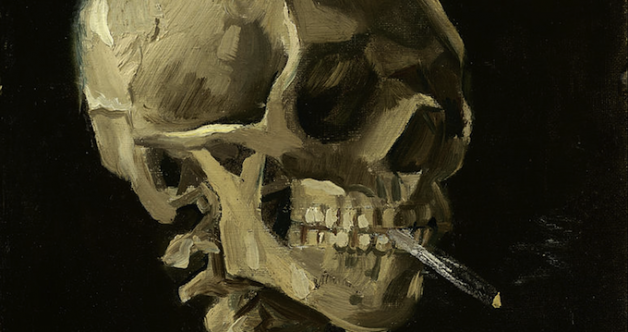There is a sort of triumphalism over death that the Gospel inspires. Christ’s victory, his resurrection to the right hand of the Father, has put something of a swagger in the Christian step. To those unfamiliar, it may seem rash; to those uncomfortable with medieval hagiography, it can seem downright morbid at times.
At heart though, it represents the flower and fruit of belief in the immortality of the soul, the perfection of faith, the universality of Christ’s mediation, and the resurrection of the dead. And yet, while we saunter on with tales of St. Lawrence and the musical styling of Matt Maher, there are still times when it can get to be too much.
A few days back, the New York Times ran a piece on a new type of funeral arrangements: “The Rite of the Sitting Dead”. The article documents how in recent years, it has become increasingly popular for families to request that their deceased loved ones assume familiar poses at their funeral. Most interesting are individuals who have appeared “standing” over a cooking pot, “seated” at a table with a can of Busch beer and a menthol cigarette, and propped up in the corner of a boxing ring. I do not mean to poke fun at the dead. I simply want to know what drives this tendency of dictating the terms of life to such an extent that the dictation overflows the very bounds of earthly days. Is this a case of the democracy of the dead, or the throes of a life hell-bent on control?
For a semester, I studied abroad at a campus in Austria that had functioned for about four centuries as a Carthusian charterhouse. Though the iconography was sparse, the Church and cloister included some beautiful art. One image in particular has stayed with me. On the western wall of the cloister, there was a sundial, dominated by the figure of a skeleton with sickle in hand.
For the monks who lived at the Kartause, the conceit was plain. Death and the judgment to come dictate the terms of life. Death, in a sense, overflows into the present: Frater, memento mori. Death’s inexorable claim on our earthly lives is a rich source of Christian reflection. Fr. Ed Oakes said, “There is no point in being a Christian unless we regard death as God’s greatest gift to us.” This may seem strange, as Br. Bonaventure Chapman recently pointed out. But by entering into the final crucible with Jesus, who endured it in his own flesh, and with hope for what lies in store, the final pilgrimage can become desirable.
In preparation for the final poverty, death, the Christian tradition invites us to live in poverty of spirit so as to cling more closely to Christ. This poverty of spirit is visible in the witness of some of the Church’s greatest saints. St. Dominic died in another friar’s cell clothed in another friar’s habit. St. Francis, with his classic one-upmanship, died blind and naked on the bare earth. In these prophetic gestures, we see in icon the purpose of this life—to prepare for the unmediated vision of the Most High. The story is one of friendship. The folly is one of lovers.
With this recent trend of posturing corpses, it seems that we observe just the opposite trajectory. Rather than countenancing the thought of death in life and shaping the terms of terrestrial existence by the terminal standard, the funeral rite is overwhelmed by an earthly anxiety. The vice president of one funeral home gives clear testimony to the fear at work:
“This is not a fun or funny event; the family is going through a lot of pain.” With these kinds of arrangements, “the family literally suffers less, because they see their loved one in a way that would have made them happy — they see them in a way in which they still look alive.”
The reasoning is a bit discomfiting and markedly therapeutic. Because many cannot bear the loss of a loved one, we make believe. But beyond shirking the responsibility of suffering graciously what eventually befalls every man, these mock mourners have traded their hope in the future resurrection (with all of the prayers, masses, and suffrages that go with it) for a contemptible resuscitation, and “Truly, I say to you, they have received their reward.”
✠
Image: Vincent Van Gogh, Head of a Skeleton with Burning Cigarette







